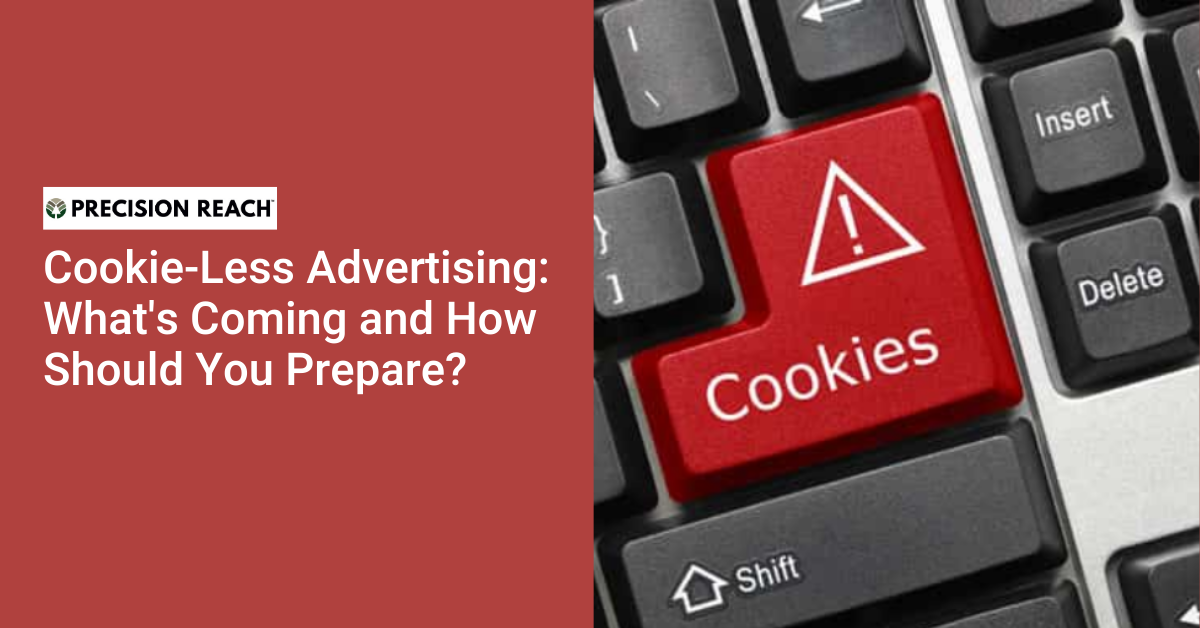
Back in 1994, Lou Montulli, a highly skilled web browser programmer at Netscape Communications, developed a website tracking solution called “persistent client state object.” This solution places a small data file on each visitor’s machine that would track what the visitor’s computer did on that website.
This later came to be known as an “HTTP cookie” aka web cookie, Internet cookie, browser cookie, or simply the cookie.

Lou Montull – the inventor of the browser cookie
Cookies changed the web from a place of discontinuous visits into a rich environment that remembers web configuration, language preferences, log-in details and products you added to your shopping cart and later re-visited the site to complete your purchase. The cookie altered the nature of surfing the web helping us to remember, store, find and get suggestions based on our preferences.
But now, it seems like we’re going to experience a new evolution in the use of cookies in advertising. This post walks through what’s changing, and our recommendations on how to respond.
Some definitions: 1st vs 2nd vs 3rd Party Cookies
First party cookies – are stored by the domain (website) you are visiting directly. They allow website owners to collect analytics data, remember language settings, and perform useful functions that help provide a good user experience.
Second party cookies – are transferred from one company (the one that created first-party cookies) to another company via some sort of data partnership. Good example: an airline could sell is first party cookies or even first party data like names, addresses and emails to a trusted hotel chain to use for ad targeting. This means the cookies become classed as “second party”.
Third party cookies – are created by domains other than the one you are visiting directly, hence the name third-party. They are used for cross-site tracking, retargeting, and ad-serving. It collects user information like location, device type, on-site behavior and more. They are usually used for online advertising purposes by Ad agencies and Ad tech companies by adding scripts or tags.
Farewell (soon) to the 3rd Party Cookie
The 3P cookie is the backbone of digital advertising. However, with Consumer Privacy Acts like GDPR and CCPA demanding that user data tracking have consent and transparency, the cookie is expected to crumble completely over the next few years.
Major players like Apple Safari and Mozilla Firefox have implemented ITP2.2 and ETP respectively to block 3P cookies and use enhanced tracking systems to make sure consent is made. Google Chrome is the biggest player with about 62% market share of users across all devices; they have announced blocking the 3P cookies through a phased approach over the next two years.
Impact of dumping cookies
Advertisers: they used to depend on 3P Data to target reach relevant users. Now, however, they need to work on building 1st Party audiences and/or link up with a relevant publisher or 1P data provider for digital campaigns, especially programmatic advertising.
Publishers: SSP (supply side platforms) and Ad Exchange will not be able to identify users on websites in the same way the can now by using 3P cookies.
AdTech Platforms: they cannot map the relevant user to display the ads on the browser since cookie sync will not happen anymore. Their targeting, frequency capping and conversion tracking needs to be handled with a different approach.
Data Management Platforms: with end of 3P cookies in web browsers, the DMPs will not be able to create custom audiences that can later be used for audience activation and targeting by advertisers.
How digital advertising can work without cookies
The digital ad ecosystem is finally getting a much-needed reboot. This is a golden opportunity for publishers to build a new business rooted in transparency and trust.
Various marketers, tech firms and data engineers are actively mapping out plans to replace the cookie.
Some solutions in the works include:
- Google is pitching its Privacy Sandbox as a solution to keep user data on the user’s device and is privacy compliant.
- LiveRamp is rolling out their Authenticated Traffic Solution to establish identity without third-party cookies using transparent 1st party authentications that individuals have with brands and publishers.
- Project Rearc by IAB Tech Lab is working on a global call-to-action that will work across different browsers and privacy standards giving consumers control of the use of their ID and any related data. This identifier will be sufficiently encrypted so it cannot be reverse engineered to identify the person.
Our Ag view at Precision Reach
First party data is and will remain mission critical. Especially with the diversity of agriculture where demo-specific ad targeting for crops, livestock and other farmographics is extremely important to the brand.
Our digital data partnership Farm Journal data will be integrated into these new solutions and platforms as the cookie is being replaced.
We will soon be testing the ATS identity resolution platform with LiveRamp.
Plus, adding more private marketplace ad serving deals like one we just signed with Pandora to reach farmers while they listen to their favorite music and podcast programming.

Work on building, appending, and updating your customer lists. With a trusted ad tech provider, use the list to run programmatic ad campaigns and social media “post boosting” to increase your followers and engagements.
Keep cultivating your CRM as it is going to be more important than ever the days ahead for digital marketing campaigns.
For more insights on data-driven programmatic advertising, email: Sales@PrecisionReach.com or call Bob Schenck at 847-778-1886